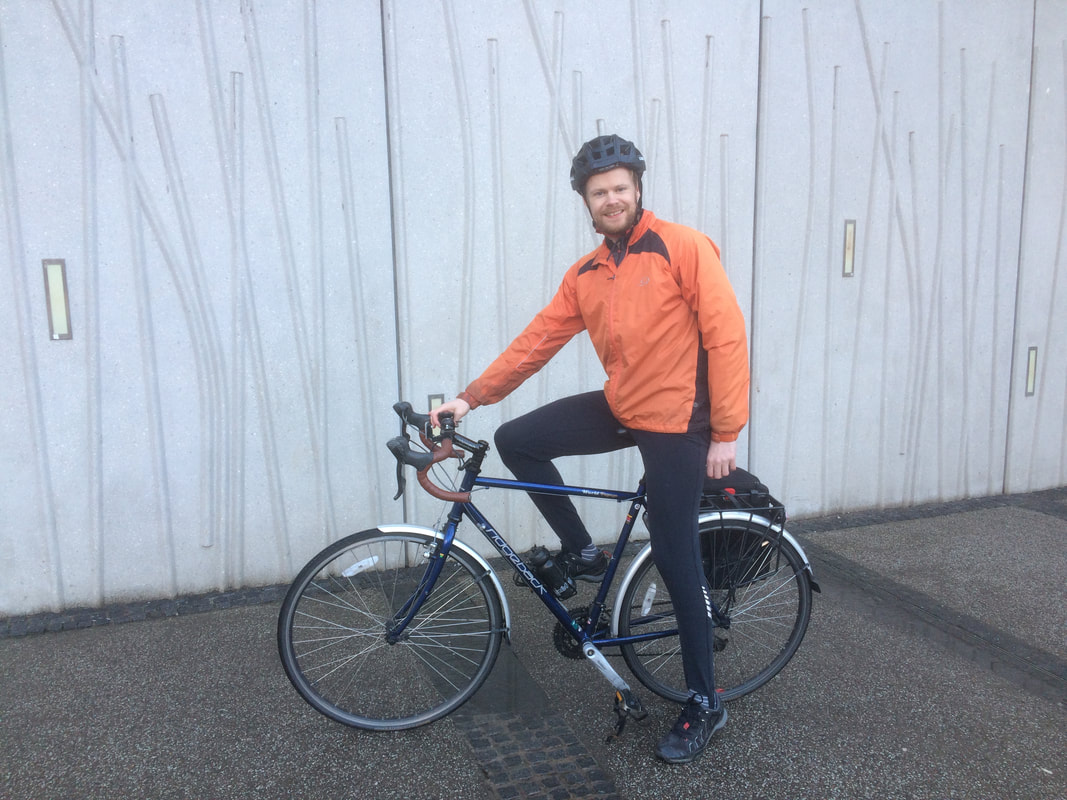|
Cycling isn’t a sport reserved only for gym bunnies and adventure-seeking diehards on specialized mountain bikes. It’s also a great way to get out more, enjoy the outdoors, or even just get from A to B in a greener method than driving, but faster than walking. Plus, it’s so simple to bring into your everyday routine!
The pros of cycling daily There are numerous health benefits for cyclists. Cycling can improve your mental well-being for one, with a study by the YMCA finding that individuals with a physically active lifestyle recorded a well-being score which was 32 per cent higher than people who were inactive. There are obviously many ways to exercise, but cycling stands out as it allows you to take part in physical exercise, get outdoors and explore fresh surroundings. It's also a fantastic way to sneak out and get some all-important time alone with your thoughts. Graeme Obree, a former hour record holder, expanded on this aspect in particular by telling Cycling Weekly: “Getting out and riding will help [people suffering with depression] … Without cycling, I don’t know where I would be.” Of course, the benefits to your body should be considered too. For instance, the activity promotes weight loss — between 400 and 1,000 calories can be burnt per hour depending on your level of intensity and your weight — and it also builds muscle, especially around the calves, hamstrings, glutes, and quadriceps. Your general health will also appreciate you taking up cycling. Cycling has been found to reduce the risk of you developing cancer or heart disease, improve your lung health, allow you to enjoy better sleep, and increase your brain power. It’s not just your health and well-being that will see improvements if you cycle more regularly either. Pedaling to and from a destination can actually take a shorter amount of time than completing the commute in a vehicle, depending on the distance and the level of traffic encountered of course. If you’re looking to save a little money, cycling can help with that too. Cyclescheme.co.uk imagined a scenario back in 2011 whereby a cyclist travelled for five miles to work every day and then another five miles to get back home. Covering a 48-week year — holidays were taken out of the equation — the organisation found that 2,400 miles will be covered, which would account for around £320 in fuel costs if a vehicle was used to travel the distance. That sum was based on the average cost of fuel during 2011; just imagine the savings today seeing as though fuel prices have continued to skyrocket over the past decade. Bringing cycling into you commute How about cycling to work instead of driving or walking? Cycling Weekly has some handy tips about how to commute to work using a bicycle. The best-selling cycling magazine recommends a bike that can handle any weather and only needs minimum maintenance, such as a road bike. Consider fitting your bike with mudguards too — no one wants to arrive at the office with mud and muck covering their clothes — as well as wide tyres which will work to spread the load, improve comfort levels, and provide enhanced grip during wet weather. Remember when you’re buying cycling gear to buy a white front light and red back light. You’ll need this for after dusk and before dawn. It’s advised that you use these lights throughout the day too though, as they’ll improve your visibility. You may also want to buy a backpack that you can fill with your essential work items and then carry over your shoulders while you cycle, or a pannier rack for your bike if you often carry a lot of stuff during a commute. It’s very important to be able to ride with confidence too. To help, Cycling Weekly advises: “Hugging the curb often encourages drivers to pass closely, which will only increase any nervousness that caused you to do so in the first place — so avoid this and keep a safe distance that affords you room to swerve around a pot hole should you need to. “When approaching junctions, check behind you and move into the centre of the lane when it’s safe to do so — this prevents anyone from overtaking or undertaking when it’s not safe to do so.” It’s a vital skill when riding to commute that you can look behind you while cycling. Cycling one-handed is another essential skill, as there will be times when you need to release one hand from the bike’s handlebars to indicate and tell other road users that you’re about to make a turn. A good-quality lock will keep your bike secure at work. It’s recommended that you apply one lock to the frame of the bike and then a cable lock to the wheels if they are attached by quick-release skewers. On the topic of security, try and leave your bike in a location that is monitored by CCTV too. Be ready to head into the office after your ride too! Keep a pair of appropriate work shoes at work which you can quickly slip into once you’ve arrived, and pack some dry shampoo and wet wipes to look the part if your workplace doesn’t have its own shower. With cycling offering so many benefits, we’re sure you’ll enjoy bringing it in to your daily routine! Author BioLee Dover is a senior copywriter at Mediaworks with an interest in sports as well as researching into healthier ways of living. He has a BA (Hons) in Magazine Journalism. Away from work, Lee is also a keen runner and is an athlete and coach for Houghton Harriers & Athletics Club. Since joining the club in 2015, Lee has competed in various road, track and cross country competitions — on a regional and national scale. Highlights of his running career to date include his victories at the 2017 Lambton Run 10K and the 2018 South Shields 10 Mile race. You can follow his progress on Twitter via the handle @leedover1.
0 Comments
Leave a Reply. |
Categories
All
Archives
July 2024
|

